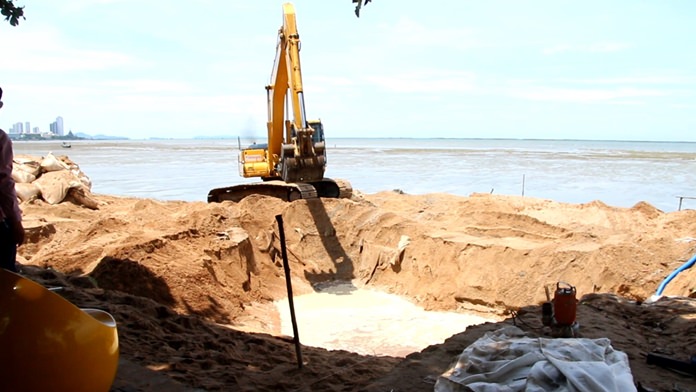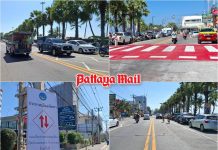
PATTAYA – Pattaya’s Engineering Department said no public hearing is required for a Kratinglai beach-erosion project as it is merely repairing an existing breakwater.
Department spokesman Nattapong Sangtaveesuk said Sept. 27 that the 18-million-baht concrete-and-stone wall upgrades an erosion line damaged by the elements and is not new construction that would require a public forum.
Boonma Fungrak, president of the Ban Rong Mai Keed Community, on Sept. 22 called for a halt to construction until a hearing was held and residents get more information on the environmental studies done before backhoes dug in.
Boonma said residents don’t believe the project will do anything to prevent erosion and, in fact, will create more problems because the rocks in the wall will attract barnacles and moss that could pose a danger to tourists.
More worryingly, however, the change in tidal patterns the barrier will create will irreparably harm the ecosystem by affecting the growth of tiny organisms on which shrimp and crab feed. When their population dwindles, big fish that feed on them will migrate to other areas, he explained.
Nattapong said the replacement breakwater will have no additional impacts than the old wall. And, unlike the broken erosion line, this one should actually work, he said.
The original Kratinglai Beach breakwater was built in 2015 entirely of concrete, which failed to lessen the impact of waves on the shore and thus didn’t stop sand from being carried out to sea. The new construction will be made of stone and porous concrete, which will lessen the blows to the beach and retain much more sand.
The new 120-meter-long wall also will be sunk two meters below the surface and have a slanted face to provide further stability and effectiveness, he said.





